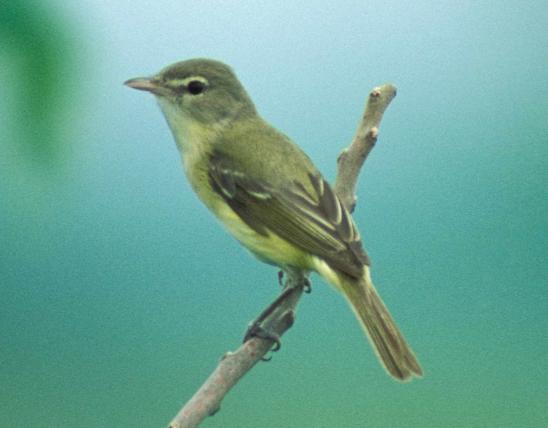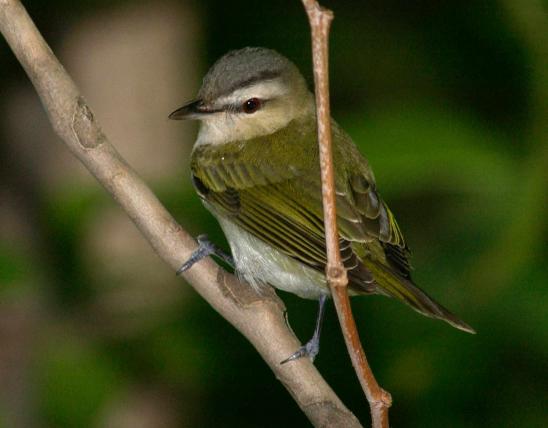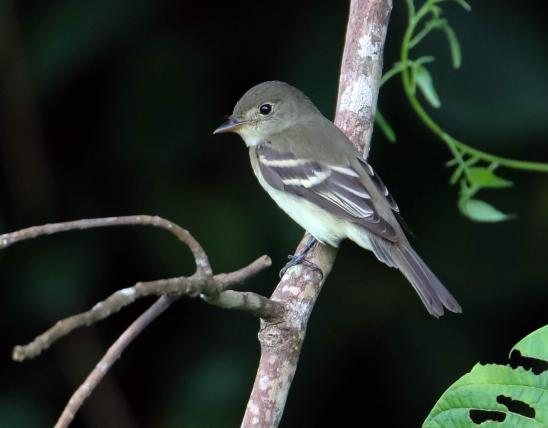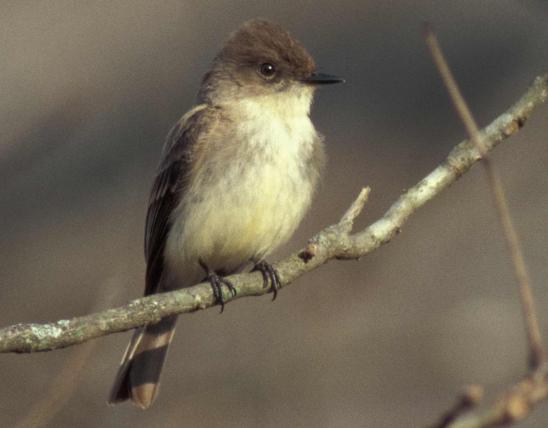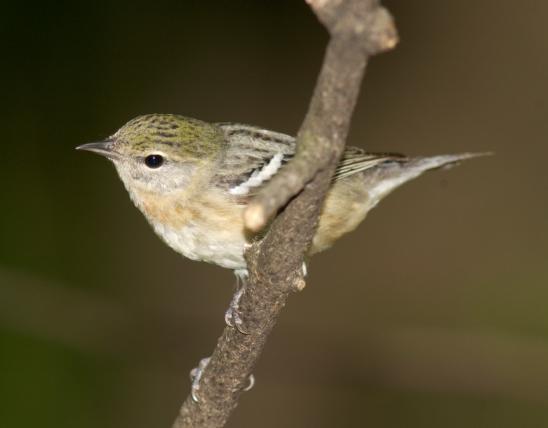
Adult white-eyed vireo upperparts are grayish olive with two white wing bars. Visible only at close range, the iris of the eye is whitish with a dark pupil. Young birds have dark eyes. The lore and eye ring are yellow. Underparts are whitish with yellowish sides and flanks. The song is distinctive and loud; it begins and ends with a loud chick, and the middle is peer wheeo. Frequently the song is described as "pic, pic up the beeeer check" or "sit, sit-behind-a-white-oak, sit." Call is a descending veeer. They will mimic other nearby species in their song.
Similar species: Be sure to check the bill on any slowly foraging, pale or drab-colored warblerlike bird, for it may be a vireo. The bill of a vireo is relatively thick, until the tip, and it has a small hook that can be seen from below. Warblers' bills are narrow and taper to a sharp point.
Length: 5 inches.

Statewide, but more common in southern Missouri.
Habitat and Conservation
Lives in low shrubs and thickets, old pastures and fields, the edges of woodlands, and brushy places along streams.
Food
White-eyed vireos forage for insects by slowly hopping from branch to branch in low shrubs and thickets, peering, then pecking at prey items. They also eat spiders, berries, and small lizards.
Status
As a summer resident, common in southern Missouri, rare in the north. Accidental winter visitor in southeastern Missouri. This bird’s old nickname, “the politician,” apparently arose from its habit of using bits of newspaper in its nest — although its jabbering, severe song no doubt contributed to the nickname’s popularity.
Life Cycle
Present in Missouri April through early October, with numbers highest May through early September. Suspended cup nests are built in the fork of a small, low branch. They are built of leaves and a variety of other plant materials bound together with spider and insect silk. The outside is camouflaged with moss, leaves, and lichens. Clutches comprise 3–5 eggs, which are incubated 13–15 days. After hatching, the young leave the nest after 9–11 days. Winter range includes the Gulf Coast states, into Central America, and Cuba. A white-eyed vireo can live to be at least 10 years old.
Human Connections
The white-eyed vireo’s song has inspired many adjectives: snappy, explosive, unvireolike, pert, abusive, severe, dictatorial, tart, sarcastic, contemptuous — an old nickname for this bird is “the politician” — and people have created many fun phrases to match it: “Quick, give me a raincheck”; “Whip Tom Kelly,” “Who are YOU, now?” and “Get out! Beat it!” But we like the ones we provide in the description, above.
Ecosystem Connections
Young white-eyed vireos have gray or brown irises. Many bird species have irises that change color as they mature. This may have adaptive value, in that it helps birds gauge each other’s ages — useful for choosing an older, more experienced mate, for example.














About 350 species of birds are likely to be seen in Missouri, though nearly 400 have been recorded within our borders. Most people know a bird when they see one — it has feathers, wings, and a bill. Birds are warm-blooded, and most species can fly. Many migrate hundreds or thousands of miles. Birds lay hard-shelled eggs (often in a nest), and the parents care for the young. Many communicate with songs and calls.






















